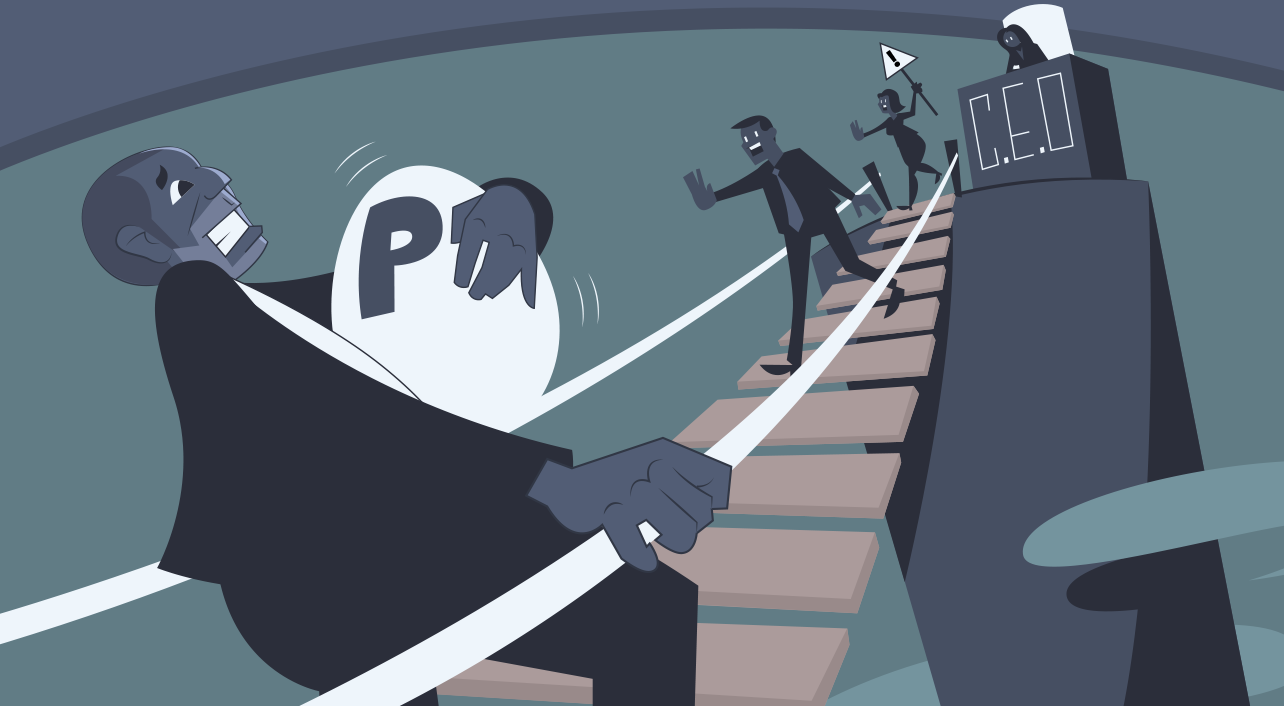- sales
- Blog post
What happens to the sale if your buyer gets internal pushback?
You’ve won over the prospect you’ve been wooing for months. He’s convinced you’re offering great value with your product and is ready to close. And now, all you need is for him to persuade his management team to sign the deal.
That’s a legitimate expectation on your part, right?
Well, not necessarily. Just because your contact personally likes what you’re offering doesn’t mean he’s ready to go to the mat for you with his colleagues and/or superiors.
A matter of risk
The Conference Executive Board, a consultancy on business best practices, surveyed 600 B2B buyers about their attitudes towards complex sales — i.e., sales where multiple buyers and influencers within the customer company have to agree before a deal can be concluded.
Perhaps the most striking finding of the survey was this: Only half the people who said they would personally support buying a product or service were also willing to advocate for the purchase within their organization.
The reason wasn’t hard to uncover. The CEB researchers said it was a question of risk to the would-be advocates. Half of those who weren’t willing to push internally for a purchase said they feared losing their credibility — or even their jobs — if the purchase went ahead and then flopped.
Able AND willing
So what’s the best course for a salesperson facing this challenge? It’s all very well to prep your contact with the arguments you think will win his people over. That’s a matter of making them able to help you.
But how can you stiffen the spine of a would-be advocate who’s hesitant to stick his or her neck out? Even if they begin by recommending your product, at the first challenge from their management, they may lose confidence and fold. You need to find a way to make them willing to help, even in the face of opposition.
The CEB research indicates that it’s all about highlighting what your contact has to personally gain by taking a stand, and minimizing his risk.
A scenario
Let’s imagine salesperson Monique has won over prospect Brad, and now wants him to advocate for the deal at a meeting with his company’s buying committee, which includes the CEO. Monique starts with the potential gain for him.
“Brad, imagine you succeed and our solution improves the company’s profitability. What will that mean for you personally?”
“I’ll be a hero,” says Brad.
Then she hits the risk factor head on.
“Now imagine,” Monique says, “that the CEO asks tough questions suggesting she’s skeptical about our solution? What would that mean for you personally?”
The best-case scenario? Fearless Brad insists he’s all in and will fight to win the day whatever the consequences.
The more likely scenario? Risk-Averse Brad says, “If I pushed back hard and convinced her, and then we didn’t get the outcome I predicted, I’d be a goat, not a hero.”
And he might just back down … and Monique will lose the deal. What to do?
Plan B
Here’s a Plan B that Monique could suggest to Risk-Averse Brad that would minimize his risk and improve the chances he’d help her land the deal.
“So, Brad, if for example the CEO pushes back strongly and suggests that a low-cost, limited solution might work, don’t argue with her. Instead, give her three options: 1. Our comprehensive solution; 2. The limited low-cost alternative; and 3. Doing nothing at all. Then say, ‘Based on what you know, what do you think is the best option?’ ”
“I like it,” says Brad. “She’ll ask more questions about each option. I’ll just give her the objective facts she needs. I won’t advocate at all and it’ll be her decision, not mine.”
“Exactly,” Monique says. “You’ll get plenty of credit if our solution works, but you won’t get blamed if it falls short.”
Summary
To sum up, Monique has prepared Brad and made sure he’s able to handle the meeting himself. And she’s given him a Plan B in case he encounters strong push-back and is not willing to take on a high-risk advocacy role that could hurt his career.
What will Brad actually do in the pressure-cooker of that critical meeting? Monique can’t be absolutely sure. But she’s proactively armed Brad with all the tools he needs to win the deal.
This blog entry is adapted from the Rapid Learning module “How to Help Prospects Get Internal Buy-In From the C-Suite.” If you’re a Rapid Learning customer, you can watch the video here. If you’re not, but would like to see this video (or any of our other programs), request a demo and we’ll get you access.
The blog post and Rapid Learning video module are based on the following study: Schmidt, K., et al. Making the Consensus Sale, Harvard Business Review, March 2015.

Get a demo of all our training features
Connect with an expert for a one-on-one demonstration of how BTS Total Access can help develop your team.



